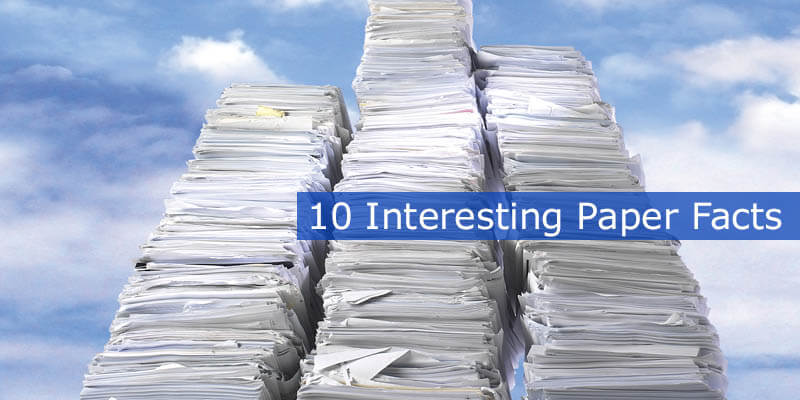Every day we tend to use paper whether its reception, to put in writing a searching list, at school to write down an essay, or at work to file a report. The books and newspapers we read, the till receipts from the grocery store, the reminder we stick on the electric refrigerator. It surrounds us all the time. However how much does one know about the stuff?
Here is a collection of 10 Interesting Paper Facts:
1. it’s almost two thousand years old
It is believed and that paper was first invented and made-up in China within the year 105AD by Cai Lun within the court of the dynasty. Before then alternative materials were used.
Papyrus was utilized in ancient Egypt and animal skins were accustomed manufacturer parchment and vellum in Europe. The paper was named after the name of Papyrus.
2. It is not all made up of wood
Cai Lun’s first paper was made up of scraps of fabric and items of hemp material. Even nowadays some paper continues to be made up of fabric – the banknotes in your purse are created using cotton fiber that means they’re a lot of durable than traditional paper.
3. One tree can make plenty of paper
The majority of the paper is created from wood, however. Obviously, as trees are available in different sizes it’s tough to tell precisely how many sheets of paper is made up of any single tree.
This article makes a brave try at some calculations though and comes to the conclusion that one coniferous tree (Pine tree) will make simply over 80000 sheets of printer paper (calculation of the Letter format paper, not the standard A4)
4. What is the difference?
In the UK (and many other countries) we tend to use paper sizes based on the A-series.
This was developed in Germany within the earlier 1920s and was adopted as a world standard within the 1970s. This method was never adopted within the U.S.A. where instead they most typically use Letter sized sheets of paper (215.9 x 279.4 mm compared to 210 x 297 mm for A4).
5. The bigger is the better
According to Guinness World Records, the biggest hand-made sheet of paper was created by the two Japanese, Masaki Takahashi, and Kazuki Maeda in Toyama on 19th August 2009.
6. Return to the fold
Regardless of how massive a piece of paper is there’s a natural limit to how many times it will be folded in half. This is because with every fold the paper doubles in thickness and therefore the sides become stronger.
For a long time, it absolutely was thought that this limit meant that paper may only be folded in half seven times but in 2002, 17-year-old student Britney Gallivan proved that it absolutely was possible to fold the paper in half eleven times.
This was then overwhelmed in 2012 once a team of students from St Mark’s school in Massachusetts managed to make 13 folds.
7. The art of paper-folding
Beyond the mathematics of paper-folding is the art called origami (from the Japanese words which means ‘folding’ and kami which means ‘paper’) this Japanese tradition was developed within the 17th century and have become more common in the rest of the world throughout the 1900s.
8. Paper airplanes
There cannot be anyone who at some point in their paper-folding life hasn’t created a paper airplane however some individuals are a bit higher at it than others.
In 2012 a new record for distance was set by paper airplane thrower (and quarterback) Joe Ayoob using a plane designed by John Collins, known as the best paper air plane maker.
Ayoob beat the previous record of 63.19m by nearly 6m once his plane traveled 69.14m.
9. We use plenty of paper
Even if we do not include the number of sheets which can end up being turned into record-breaking paper airplanes we get through lots of paper. The typical office employee handles around 10 000 sheets of paper each year!
10. The importance of recycling
Considering how much paper we tend to use per annum the importance of recycling shortly becomes clear. Around two-thirds of the paper we use every day, gets recycled and recycling does not only save trees – each ton of paper that gets recycled saves about 7000 gallons of water and produces 73% fewer pollution than manufacturing paper from new materials.


Leave a Reply